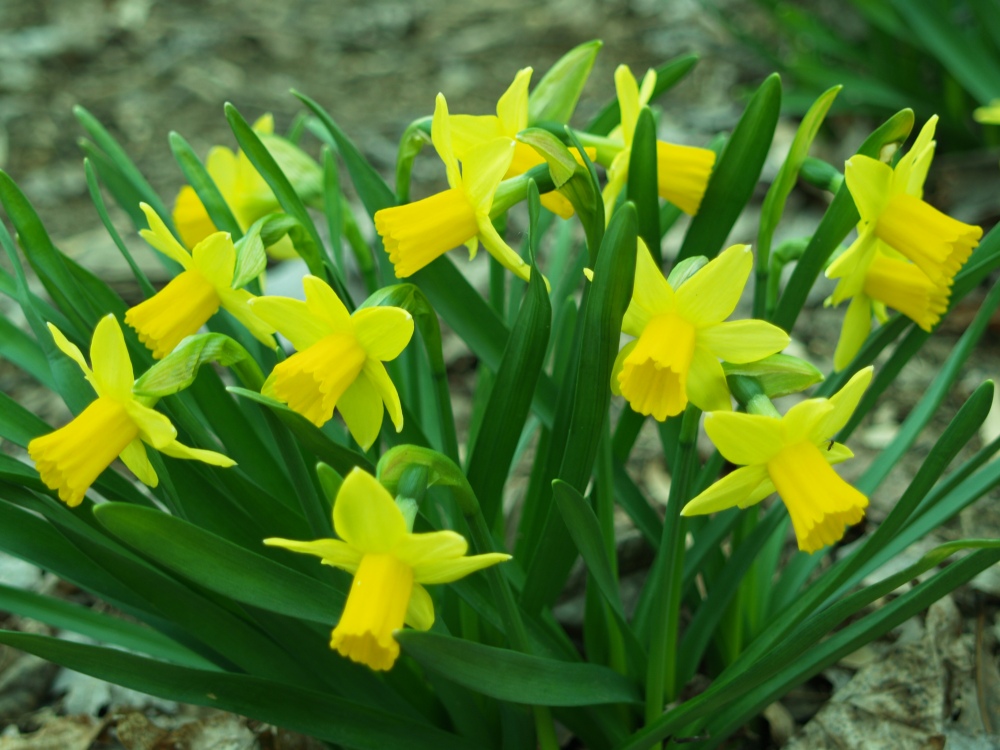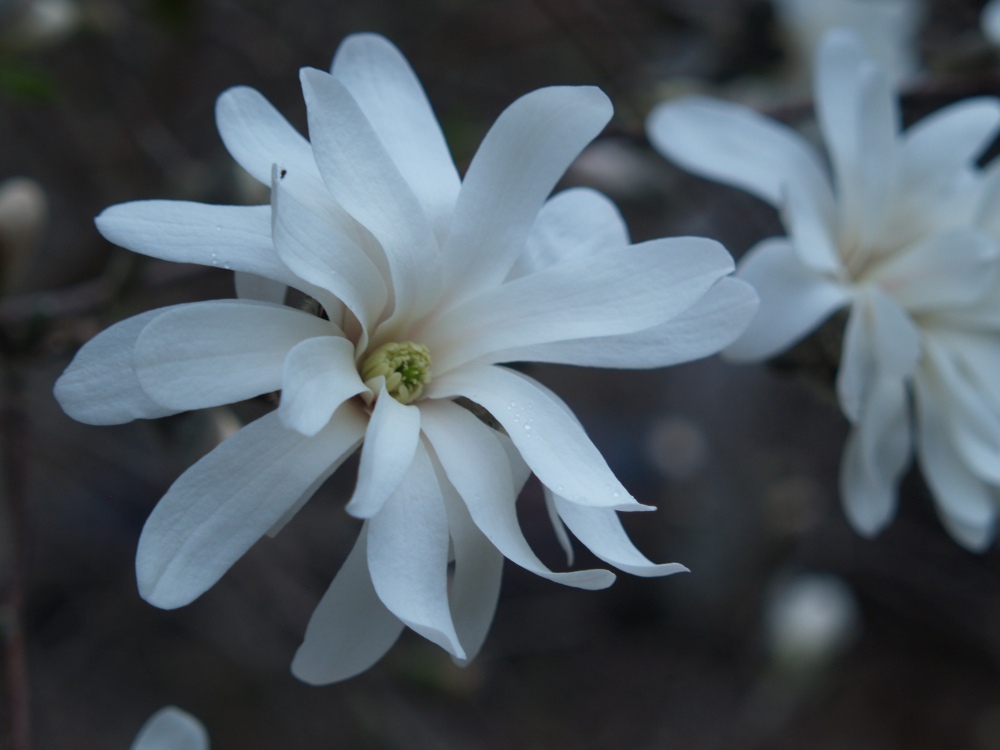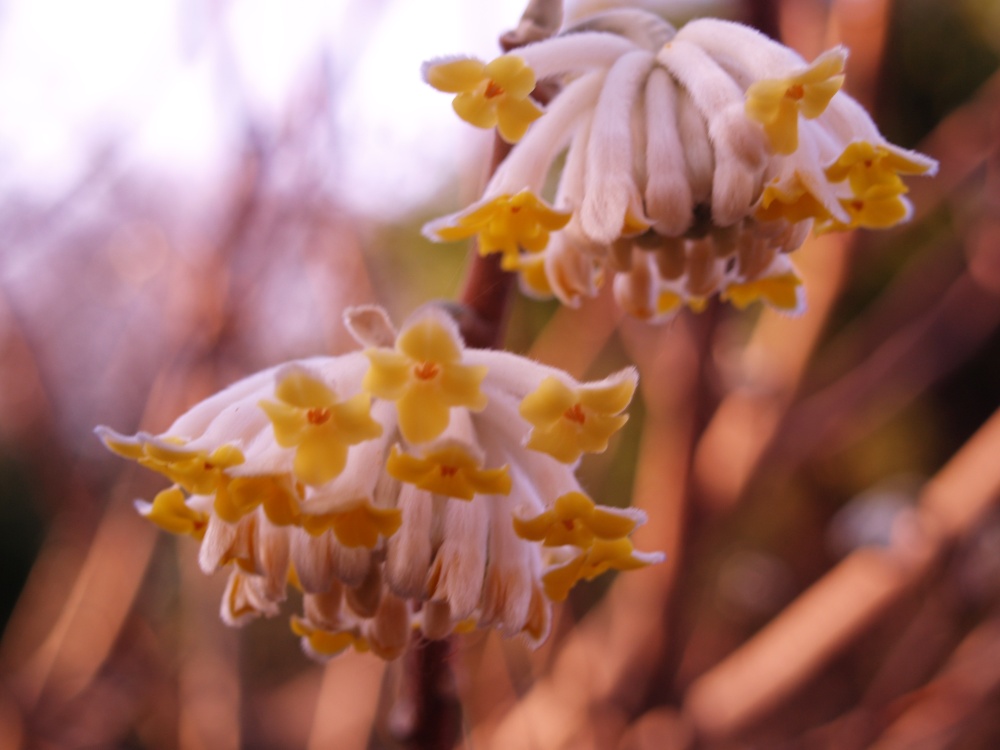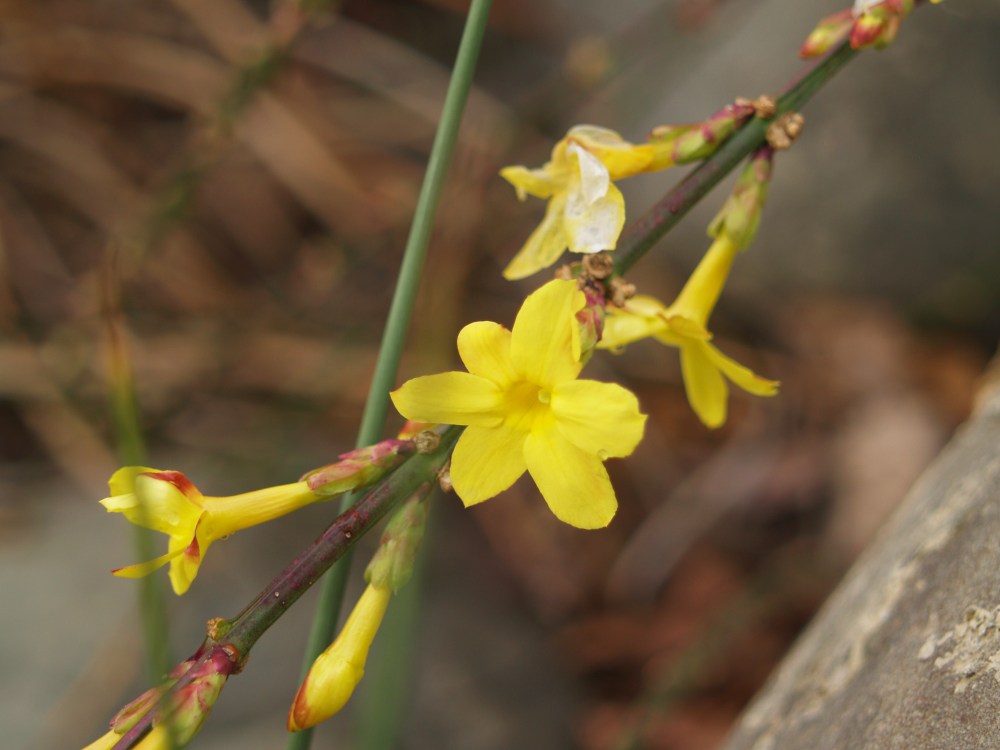In January, there was widespread concern, though none in this garden, that daffodils grown three inches tall, with the worst of winter ahead, would surely be damaged by cold. Six weeks later, these have hardly grown another inch, though the start of flowers are visible on some.

As is usual, the common ‘February Gold’ will not flower in February, though it is likely to be the first of several to bloom in this garden. The early flowering, that seemed inevitable weeks ago, has turned so that many late winter blooms will be delayed by a week or two.
Happily, buds of ‘Dr. Merrill’ and ‘Royal Star’ magnolias (above) show no sign of imminent flowering in a week when nighttime temperatures are bottoming out in the high teens, and while blooms are welcomed as a harbinger of spring, flowers in early March are too often ruined in freezes that are typical for the last weeks of winter. With warmer temperatures forecast for next week, I expect there will be significant progress, and perhaps flowers by the end of that week. There seems an excellent chance that flowers will persist a week or longer until the next freeze.
Paperbushes (Edgeworthia chrysantha) are also tardy in showing color. In recent, very mild winters, first color was seen the third week of January, with fully developed flowers two weeks later. In early March, no color is showing, and again I expect that buds should swell quickly with a week of fifty and sixty degree temperatures. But, I say this with a degree of caution. Flowers were not visibly injured by a night several weeks ago when temperatures dipped below zero, but when blooms are slow in developing there’s at least a slight concern.
The first flowers of winter jasmine (Jasminum nudiflorum) are open, and again these are late, with flowers regularly appearing in late January, and occasionally before the new year. Annually, I consider removal of the jasmine, with its unruly, arching stems, but extricating the shrub from between boulders where it roots in crevices and then into the shallows of the koi pond seems a nearly impossible task. Certainly, it would involve tumbling a time or two into the chilly water, and then one must be wary of snakes that reside in the jumble. In any case, masses of yellow blooms are very welcome, particularly when flowers arrive weeks earlier than in this year.



Our daffodils are always reliable, but many of them got knocked down by all the rain. They are pretty even on the ground, and we can not complain about the rain here. Daffodils are one of only a few bulbs that naturalize here.
We will be planting some species of jasmine this autumn. It is something that I am not familiar with. I grew it from cuttings from an old specimen at a historical home in Monterey. Only the pink jasmine is common here. So far I am not impressed with the shrubby jasmine with yellow flowers, but I want to see what it does here.
The winter flowering yellow jasmine is not a beauty, but for those of us with real winters, they dependably flower. Also, there’s no fragrance, so why bother in your area?
No fragrance? this one is somewhat fragrant, not quite like the pink jasmine (vine) but noticeable. I do not know what species it is. It looks like Jasminum humile revoltum. I like it just because of where it came from. I know there are better flowers here, but some of the best are not always the best for my garden.